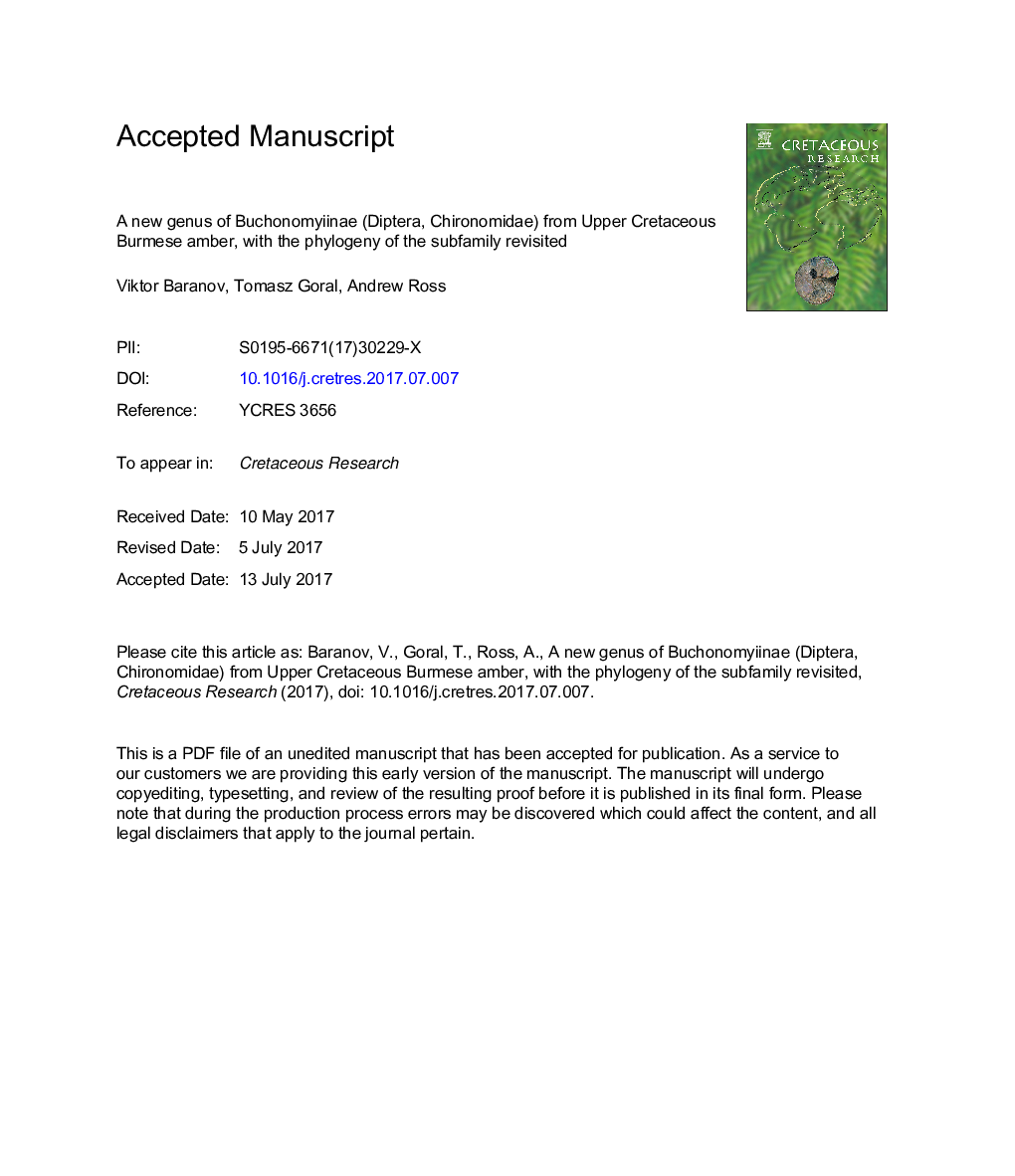| Article ID | Journal | Published Year | Pages | File Type |
|---|---|---|---|---|
| 5787995 | Cretaceous Research | 2017 | 23 Pages |
Abstract
Among the eleven modern subfamilies of non-biting midges (Diptera: Chironomidae), Buchonomyiinae are the most primitive and considered to be the sister group to the rest of the chironomids. The subfamily is monotypic with a single genus Buchonomyia, including three Recent species from Europe, South-East Asia and Central America, and a single fossil species, B. succinea Seredszus and Wichard, 2002, from Baltic amber. The elusive nature of the larvae and pupae, who develop as parasites or are commensal of caddisfly larvae, means that records of recent Buchonomyiinae extremely rare. From the latest dated phylogeny of the Chironomidae, the Buchonomyiinae branched from the rest of the Chironomidae in the Early to Middle Jurassic. Here we present the oldest record of the subfamily Buchonomyiinae, from Upper Cretaceous Burmese amber. The record is represented by a new genus Furcobuchonomyia, with a single species F. saetheri sp. nov. Bayesian analysis firmly places the new genus as the sister group to the rest of the Buchonomyiinae. Thus the discovery of this genus is shedding new light on the origin of the most basal group of the Chironomidae. A species level key to the subfamily is included.
Related Topics
Physical Sciences and Engineering
Earth and Planetary Sciences
Palaeontology
Authors
Viktor Baranov, Tomasz Góral, Andrew Ross,
